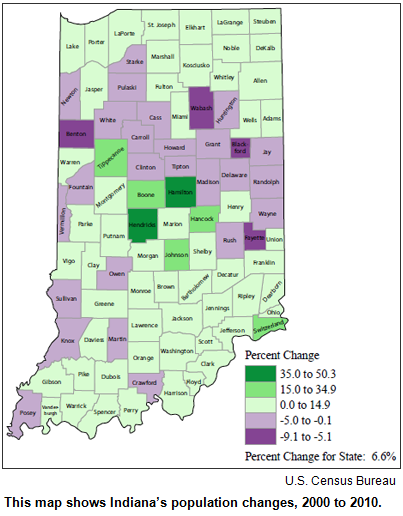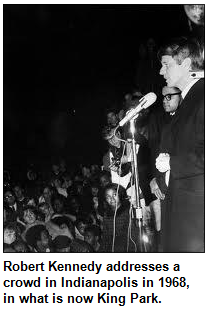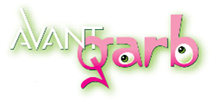You can listen to Hoosier History Live! live on the air each Saturday, or listen online at the WICR website during the broadcast. We invite you to visit our website!
March 12 show
Population shifts across Indiana
 "State's fastest-growing counties were in Indy metro area" was the headline on a recent Indianapolis Star story about the newly released U.S. Census Bureau results from 2010. Other news accounts reported shifts in Indiana's racial and ethnic makeup.
"State's fastest-growing counties were in Indy metro area" was the headline on a recent Indianapolis Star story about the newly released U.S. Census Bureau results from 2010. Other news accounts reported shifts in Indiana's racial and ethnic makeup.
Hoosier History Live! will put the results in historic context - and explore population declines in such cities as Gary, South Bend, Evansville and Hammond - when Nelson is joined in studio by an Indiana University demographer quoted in many of these accounts about our state's population shifts. He is Matt Kinghorn, an analyst with the Indiana Business Research Center at IU's Kelley School of Business.
With Matt as our guide, we will explore Indiana's overall population increase; it's up 6.6 percent from 10 years prior, a growth rate that topped those of neighboring Illinois (3.3 percent) and Ohio (1.6 percent); Michigan's population actually dropped, declining by .6 percent.
Matt recommends a look at this interactive map from the Census Bureau.
Although Matt points out that Indiana still remains less diverse than the nation, the population of Hispanics in the Hoosier state grew 82 percent. (In Illinois, Hispanics have become the largest minority group, exceeding blacks, according to an account in USA Today.)
Overall, nearly 60 percent of the growth in Indiana came in Indianapolis (Marion County) and surrounding counties; the population of Carmel and Fishers has more than doubled since 2000. That may not be startling, but perhaps it's a bit surprising that only two of the state's largest cities, Indy and Fort Wayne, gained people. The largest decrease (22 percent) was in Gary, with South Bend and Evansville chalking up 6.1 and 3.4 percent losses, respectively.
 As part of our effort to put the results in historic context, Matt and Nelson will explain how, despite Indiana's reputation as an agricultural state, by far the majority of residents have not lived on farms or in small towns for many generations. The latest census results reinforce the longstanding trend of urban and suburban living.
As part of our effort to put the results in historic context, Matt and Nelson will explain how, despite Indiana's reputation as an agricultural state, by far the majority of residents have not lived on farms or in small towns for many generations. The latest census results reinforce the longstanding trend of urban and suburban living.
With the 6.6 percent growth, the state’s population totaled 6,483,802 people.
Some other results of the new data: Suburban communities and counties reported noticeable increases in black residents. And third-place in terms of growth among the most sizable cities, after Carmel and Fishers, was Noblesville.
Matt Kinghorn, our guest, has served as one of Indiana's representatives to the Census Bureau's Federal-State Cooperative for Population Estimates; he also is a member of the Indiana Geographic Council.
His work includes population projections for Indiana - so, in this case, our history show probably will be taking a future peek as well. A sampling of his projections:
- During the next 35 years, the 10-county Indianapolis metro area will account for 54 percent of the state's growth.
- Also during that period, the number of Hoosiers ages 65 and older will increase 90 percent. "An aging population is not unique to Indiana, of course, but is a national trend," Matt writes in a recent article about the population projections. "In fact, when compared to the rest of the nation, Indiana is relatively young, with a median age of 36.3 years, which ranks in the bottom third of all states."
- The state's population with Hispanic or Latino roots will double over the next 25 years, increasing by 285,000 residents.
- The Asian population also is expected to grow significantly, with Hamilton County experiencing the strongest growth. (The number of Asians in Hamilton County nearly doubled between 2000 and 2005.)
Roadtripper
 Chris Gahl of the ICVA suggests we take the Roadtrip to the Eugene and Marilyn Glick Indiana History Center at 450 W. Ohio Street in downtown Indianapolis to see a three-dimensional hologram of RFK addressing a stunned crowd near 16th Street and College Avenue in Indianapolis on the evening of April 4, 1968. That night, Kennedy let the crowd know that he had just learned that Martin Luther King had been assassinated in Memphis. The speech may also be viewed on YouTube.
Chris Gahl of the ICVA suggests we take the Roadtrip to the Eugene and Marilyn Glick Indiana History Center at 450 W. Ohio Street in downtown Indianapolis to see a three-dimensional hologram of RFK addressing a stunned crowd near 16th Street and College Avenue in Indianapolis on the evening of April 4, 1968. That night, Kennedy let the crowd know that he had just learned that Martin Luther King had been assassinated in Memphis. The speech may also be viewed on YouTube.
This new exhibit is part of the Indiana Experience, which is free for IHS members and $7 for adults who are not members.
Interesting Hoosier history fact: Only two days after the assassination of Martin Luther King, another major tragedy occurred in Indiana. A gas explosion in downtown Richmond killed 41 people and injured 150 on April 6, 1968. On the national news front, however, the MLK news eclipsed the Richmond tragedy.
History Mystery question
During the last 10 years, Fort Wayne has become the home of more refugees from a foreign country than any other American city. Nearly 5,000 refugees from the country, which is overseas, now live in Fort Wayne. About 800 refugees arrived just in one year (2008) alone. Assisted by Fort Wayne charitable organizations, the refugees began arriving in Indiana's second-largest city during the late 1980s after a military junta in their homeland began punishing people who advocated democracy.
Question: Name the foreign country from which so many refugees have settled in Fort Wayne.
The prize is a one-night stay at Hyatt Place Indianapolis at Keystone and a pair of tickets to Morty's Comedy Joint on East 96th Street in Indianapolis, courtesy of the ICVA.
To win the prize, you must call in with the correct answer during the live show. The call-in number is (317) 788-3314, and please do not call until you hear Nelson pose the question on the air. Please do not call if you have won a prize from any WICR show during the last two months. You may wish to email the answer, but that doesn't "count" in the contest. The prize is a one-night stay at Hyatt Place Indianapolis at Keystone and a pair of tickets to Morty's Comedy Joint on East 96th Street in Indianapolis.
Your Hoosier History Live! team,
Nelson Price, host and creative director
Molly Head, producer, (317) 927-9101
Chris Gahl, Roadtripper
Richard Sullivan, webmaster and tech director
Pam Fraizer, graphic designer
Garry Chilluffo, creative consultant
www.hoosierhistorylive.org






Please tell our sponsors that you appreciate their support: Avant Garb, Coby Palmer Designs, Indiana Historical Society, Indianapolis Motor Speedway, Lucas Oil and Story Inn.
 Acknowledgments to Print Resources, Indianapolis Marion County Public Library, Monomedia, Indiana Humanities Council, Indianapolis Convention & Visitors Association, WICR-FM, Fraizer Designs, Chelsea Niccum and many other individuals and organizations. We are an independently produced program and are self-supporting through organizational sponsorships, grants and through individual tax-deductible contributions through the Indiana Humanities Council. Visit our website to learn how you can support us financially.
Acknowledgments to Print Resources, Indianapolis Marion County Public Library, Monomedia, Indiana Humanities Council, Indianapolis Convention & Visitors Association, WICR-FM, Fraizer Designs, Chelsea Niccum and many other individuals and organizations. We are an independently produced program and are self-supporting through organizational sponsorships, grants and through individual tax-deductible contributions through the Indiana Humanities Council. Visit our website to learn how you can support us financially.
March 19 show
Irish in Indiana
We'll be a wee tardy - two days after St. Patrick's Day - with the next show in our popular series about ethnic immigration to Indiana. Regardless, please join us as Hoosier History Live! tips our hat to the Irish among us by exploring when and why immigrants from the Emerald Isle came to the Hoosier state, where they settled and their cultural and economic impact here.
 Nelson is delighted that he'll be joined in studio by his longtime colleague John Shaughnessy, former columnist for The Indianapolis Star and author of The Irish Way of Life (Corby Publishing), an anthology of human-interest stories about Irish immigrants; John currently is assistant editor of The Criterion, the newspaper of the Catholic Archdiocese of Indianapolis.
Nelson is delighted that he'll be joined in studio by his longtime colleague John Shaughnessy, former columnist for The Indianapolis Star and author of The Irish Way of Life (Corby Publishing), an anthology of human-interest stories about Irish immigrants; John currently is assistant editor of The Criterion, the newspaper of the Catholic Archdiocese of Indianapolis.
Nelson and John will be joined by the official historian for Marion County, David Vanderstel, an adjunct professor at IUPUI. According to an article about the Irish in The Encyclopedia of Indianapolis, they quickly became the Hoosier capital's second-largest ethnic heritage group from Europe. (They were exceeded only by residents of German heritage.)
Agents for the Wabash and Erie Canal in the early 1830s specifically recruited Irish immigrants to Indiana with advertisements for "canal hands" offering "$10 per month for sober and industrious men", according to David's account.
Others came to build roads, including the Old National Road. According to Peopling Indiana: The Ethnic Experience (Indiana Historical Society Press), in 1900 six of the 10 Hoosier counties with the highest numbers of Irish immigrants were on the old Wabash and Erie Canal line or on the Old National Road: Allen, Cass, Marion, Tippecanoe, Vigo and Wayne counties.
In Ireland, the potato famine that began in the 1840s resulted in a tidal wave of immigration. According to The Irish in America (Hyperion), one-fourth of the country's population had come to America by 1860.
Although the University of Notre Dame was founded by a French priest, it quickly became an Irish Catholic bastion, with its sports teams known, of course, as the Fighting Irish. So there is much Hoosier turf, or sod, for John, David and Nelson to explore. Rest assured the show won't just consist of facts and trends; John will share anecdotes that convey, as he puts it, "the heart, humor and heritage" of the Irish among us.
© 2011 Hoosier History Live! All rights reserved.